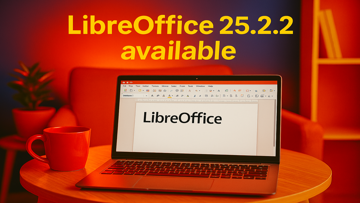Aseba
Stéphane Magnenat – Open SourceAseba: Streamlining Robot Programming for Everyone
Aseba is a versatile software platform designed to simplify the process of programming robots, making it accessible for both beginners and advanced users.
Overview of Aseba by Stéphane Magnenat
Aseba is a powerful software framework specifically designed for the development and execution of interactive and educational applications, particularly those aimed at enhancing the understanding of robotics and programming. Created by Stéphane Magnenat, Aseba focuses on providing a simple yet effective platform for both novice and experienced users to create programs that can control robotic systems in real time. This review delves into the features, usability, and applications of Aseba to provide potential users with an in-depth understanding of the software.
Key Features of Aseba
- Robust Programming Environment: Aseba features a dedicated programming language called Aseba script, which allows users to quickly develop control programs for robots. This language is designed to be easy to use, even for those with minimal programming experience.
- Real-Time Execution: One of the standout features of Aseba is its ability to execute scripts in real time. This capability is essential for robotics applications where immediate responses to sensor inputs are critical.
- Graphical User Interface: The software comes equipped with a user-friendly graphical interface that simplifies the process of writing, editing, and testing scripts, making it suitable for educational purposes.
- Interactive Capabilities: Aseba supports interactive components that allow users to create engaging applications. This element is particularly beneficial for educational settings where interaction helps facilitate learning.
- Extensive Documentation: Stéphane Magnenat ensures that Aseba is well-documented with tutorials, references, and examples to assist users in mastering the system quickly.
- Cross-Platform Support: The software is compatible with various operating systems, providing flexibility for users regardless of their preferred environment.
User Experience and Interface
The user experience presented by Aseba is generally positive. The graphical user interface facilitates easy navigation and helps new users acclimate swiftly to the software's functionalities. The layout promotes a clear workflow where users can edit, test, and deploy their scripts seamlessly. Each component of the interface provides intuitive access to scripting tools while maintaining vital features within reach.
The robust documentation accompanying Aseba greatly enhances the user experience. Beginners can benefit from detailed guides, while advanced users can explore more complex functionalities with ease. Tutorials often walk through scenarios that are pertinent to typical learning outcomes—bringing theoretical concepts into practical applications.
Applications of Aseba
Aseba finds its primary purpose in educational environments—especially in teaching programming and robotics concepts. It has gained popularity among educators and students due to its real-time execution capabilities which provide immediate feedback during learning processes.
Educational Use Cases
- Robotics Clubs: Many high schools and universities utilize Aseba as part of their robotics clubs where students design robots that can perform various tasks according to programmed controls.
- Workshops and Camps: Several organizations conduct workshops using Aseba as it enables participants to create functional robotic projects quickly.
- Curriculum Integration: Patterns for integrating Aseba into science or technology curriculums facilitate hands-on learning experiences where theory can be applied in practical situations.
Technical Specifications
Aseba's framework supports a variety of robotic hardware systems, providing an open-access platform for developers and educators alike. Depending on the connected devices, users may adapt their scripting strategies according to distinct functionalities or hardware constraints:
- Sensors: Users can interface numerous sensors (e.g., ultrasonic, infrared) within their projects to capture data from the environment effectively.
- Actuators: Control over actuators (motors) enables seamless integration into robotic systems allowing various movement patterns dictated by user-created scripts.
- Compatibility: Works well with numerous popular robotic platforms including Thymio robots, making it accessible for those already invested in specific hardware.
Community and Support
The community surrounding Aseba is active and contributes significantly to its development. User forums typically serve as platforms for sharing projects, troubleshooting issues, and providing peer support. Stéphane Magnenat's proactive involvement in addressing community queries further strengthens user engagement.
A plethora of open-source projects have emerged from users who utilize Aseba extensively in robotics competitions or academic research. By sharing code snippets and ideas within the community space, users foster a collaborative environment conducive to innovation.
Conclusion on Aseba by Stéphane Magnenat
Aseba stands out as a versatile tool tailored for educational settings focused on robotics and programming. Its strategic combination of real-time execution capabilities, ease of use, extensive documentation, community support, and versatile application scopes makes it a worthy choice for both teaching institutions and hobbyists alike. As technology continues evolving in educational contexts, software like Aseba remains integral in bridging theoretical knowledge with practical application through engaging interactive platforms.
Overview
Aseba is a Open Source software in the category Miscellaneous developed by Stéphane Magnenat.
The latest version of Aseba is currently unknown. It was initially added to our database on 10/16/2009.
Aseba runs on the following operating systems: Windows.
Aseba has not been rated by our users yet.
Pros
- Aseba is open-source which allows for transparency and community-driven improvements.
- It has a user-friendly visual programming interface which makes it suitable for beginners and educational purposes.
- Aseba supports a wide range of hardware platforms like Thymio robot, making it versatile for different projects.
- The platform offers good documentation and tutorials to aid users in understanding and using the software effectively.
Cons
- Since Aseba is tailored more towards educational purposes, it may lack some advanced features required for complex robotics projects.
- The community support may not be as extensive as more mainstream robotics programming platforms.
- Some users may find the visual programming interface limited in comparison to text-based programming languages.
FAQ
What is Aseba?
Aseba is a high-level programming environment for educational robotics.
Who developed Aseba?
Aseba was developed by Stéphane Magnenat.
What programming language is used in Aseba?
Aseba uses a scripting language based on Event-Driven Behavior Trees called ASEBA Script.
Is Aseba open-source?
Yes, Aseba is an open-source project.
What types of robots are compatible with Aseba?
Aseba is compatible with various robots, including the Thymio educational robot.
Can I use Aseba for advanced robotics projects?
While primarily designed for educational purposes, Aseba can also be used for more advanced robotics projects.
Are there online resources available to learn Aseba?
Yes, there are tutorials and documentation available on the Aseba website to help users learn Aseba.
Does Aseba support simulation environments?
Yes, Aseba supports simulation environments such as VPL, allowing users to test their programs without a physical robot.
Can I extend Aseba's functionality with plugins?
Yes, Aseba provides a plugin system that allows users to extend its functionality.
Is there a supportive community around Aseba?
Yes, there is an active community of users and developers who provide support and contribute to the improvement of Aseba.
Boris Weber
I am an editor at UpdateStar. I started as a support engineer, and am now specialized in writing about general software topics from a usability and performance angle among others. I telecommute from UpdateStar’s Berlin office, when I am not working remote as a digital nomad for UpdateStar. When I'm not analyzing the latest software updates, you can find me exploring new cities, immersing myself in local cultures, and discovering innovative tech trends across the globe.
Latest Reviews by Boris Weber
Latest Updates
PowerToys 0.90.1
Boost Your Productivity with PowerToys!Visual Studio Code 1.99.2
Powerful and Versatile: Visual Studio Code is a developer's best friendCalibre 8.2.100
Organize and manage your e-book library with ease using Calibre.Gps Family Location Tracker 1.3.59
Real-Time Location SharingCommunicating your precise location to others can often be challenging, especially when you are on the move. This application addresses that issue by allowing users to share their real-time location effortlessly.Trader's Box 3.6.1
The version 3.0 of the Trader’s Box App offers features that make trading faster and more convenient on-the-go. Product Search: Quick and clear – find leverage products in just 3 clicks.Latest News
Latest Reviews
|
Flappy Nyan
Endless Fun with Flappy Nyan: A Colorful Adventure! |
|
|
WeFast: Diet Plan for Women
WeFast: Your Personal Diet Companion for Women |
|
|
Super Power FX - Superheroes
Unleash Your Inner Superhero with Super Power FX |
|
|
Hunting Season 3D
Experience the Thrill of the Hunt with Hunting Season 3D |
|
|
NIV 50th Anniversary Bible
A Timeless Classic Reimagined: NIV 50th Anniversary Bible Delivers |
|
|
Orbit - Find lost keys & phone
Never Lose Your Belongings Again with Orbit by HButler |
|
UpdateStar Premium Edition
Keeping Your Software Updated Has Never Been Easier with UpdateStar Premium Edition! |
|
|
Microsoft Visual C++ 2015 Redistributable Package
Boost your system performance with Microsoft Visual C++ 2015 Redistributable Package! |
|
|
Microsoft Edge
A New Standard in Web Browsing |
|
|
Google Chrome
Fast and Versatile Web Browser |
|
|
Microsoft Visual C++ 2010 Redistributable
Essential Component for Running Visual C++ Applications |
|
|
Microsoft Update Health Tools
Microsoft Update Health Tools: Ensure Your System is Always Up-to-Date! |





